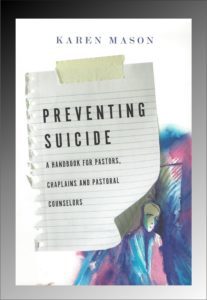Stephen W. Hiemstra's Blog, page 203
July 27, 2018
Pascal’s Wager
 “The fear of the LORD is the beginning of knowledge;
“The fear of the LORD is the beginning of knowledge;
fools despise wisdom and instruction.” (Prov 1:7)
By Stephen W. Hiemstra
An important atheistic argument for why faith is not rational starts with the observation that the existence of God can neither be logically proven or disproven. Atheists focusing on this observation prefer the term, agnostic, which in Greek means “not knowing,” suggesting that there is insufficient evidence to make a faith decision.
Priorities Reveal True Beliefs
Contrary to the definition of agnostic, the agnostic is not a neutral observer. Every human being has a set of priorities in which the first priority defines how the rest are interpreted. The number one priority is often to remain in control of one’s own life; alternatively, it is a spouse or other person or something like work.
For the Christian, the number one priority should be God, as proscribed in the First Commandment: “You shall have no other gods before me.” (Exod 20:3); if it is not one has committed an act of idolatry. Idolatry is dangerous because, if one uncritically has accepted a number one priority other than God, this idol will invariable break and produce an “existential crisis” that will result in anxiety, depression, even suicide. Why? Because a broken idol deprives one of identity and meaning—one’s god has been smashed. Loss of a spouse or work that has been a first priority is devastating.
The professed agnostic is accordingly at risk of an unexpected, existential crisis. The current epidemic of anxiety, depression, and suicide in Western society should accordingly be seen as a spiritual crisis requiring spiritual, not just psychiatric, intervention.
Personal Experience
As a young person, I experience an important challenge to my faith when the elders of the church dismissed my youth director in my junior year in high school. This youth director had encouraged me to take an active role in the youth group and to take my faith seriously. When she left the church, I bitterly resented her dismissal and became angry at God. My experience with the church had accordingly posed an important barrier to faith as a young adult.
Even in my absence from the church and bitterness at God, I felt his presence. As time passed (about three years), I realized that the bitterness was directed at the leadership of the church who had dismissed my youth director, not at God. Sorting out my own anger permitted me to accept God back into my life and I sought a new church.
Pascal’s Wager
During the period of my anger with God, atheistic arguments never seemed real to me, even when I repeated them, because I knew God first hand and I knew that I had been blessed when I came to faith. Pascal’s Wager, which was directed at atheists, made perfect sense to me, even when I had turned my back on God.
Pascal used probability theory to argue that the agnostic argument is logically false in that faith is a fair bet (hence the term, Pascal’s wager)—if God exists and you believe, then you win heaven, but if God does not exist and you believe, then you loose nothing. In other words, faith in God has a positive reward even if the probability of God existing cannot be established—just so long as the probability is believed to be a non-zero, positive number. Betting that God exists is therefore rational from a gambling perspective.
Going back to the agnostic’s assertion that the evidence for God is inconclusive, Pascal’s wager breaks the tie. The preponderance of evidence suggests that living as if God exists provides a net benefit. Ignoring that benefit accordingly reveals a bias against faith.
Pascal’s Wager
Also see:
A Roadmap of Simple Faith
Christian Spirituality
Looking Back
A Place for Authoritative Prayer
Other ways to engage online:
Author site: http://www.StephenWHiemstra.net, Publisher site: http://www.T2Pneuma.com.
Newsletter at: http://bit.ly/Hebrew_Heart
The post Pascal’s Wager appeared first on T2Pneuma.net.
Marketing for Authors Conference, Vendor Brochure Invitation
 Dear Friends in Christ:
Dear Friends in Christ:
As you may know, CCW and the Northern Virginia Christian Writers Fellowship have teamed up in 2018 to host a new conference: Marketing for Writers. On Saturday September 8.
This year as last, we plan to provide a vendor brochure where you can promote your writing and publishing products and services at modest cost (details: click here). It is also possible to sponsor a coffee break or lunch.
For more information about promotional options see: (click here)
Early bird registration for the conference is now open. Get your discount today at (click here)
Yours in Christ,
Stephen
The post Marketing for Authors Conference, Vendor Brochure Invitation appeared first on T2Pneuma.net.
July 24, 2018
Tennis and Morton: Write to Complete
 Cary Tennis and Dannelle Morton. 2017. Finishing School: The Happy Ending to That Writing Project You Can’t Seem to Get Done.New Tarcher Perigere Book.
Cary Tennis and Dannelle Morton. 2017. Finishing School: The Happy Ending to That Writing Project You Can’t Seem to Get Done.New Tarcher Perigere Book.
Review by Stephen W. Hiemstra
The most pressing question that I have for authors that present at writers’ clubs functions is simple: how do you cope with the emotional side of writing? Feelings of despair, shame, and professional inadequacy haunt most full-time writers, regardless of their professional standing. Crafting words into books daunts authors because of the length and loneliness of task. Is it any wonder that two-thirds of those that enter a doctor of philosophy program never finish primarily because of the requirement that a dissertation must be written and approved. Among economists, the ability to complete a research project and publish the results is known aptly as the “killer instinct,” because the prize awaits only those that finish.
Introduction
In their book,Finishing School: The Happy Ending to That Writing Project You Can’t Seem to Get Done, Cary Tennis and Dannelle Morton (T&M) write:
“The Finishing School method doesn’t require you to change, to become a better person who is more organized, more disciplined, and has life under control. It asks only that you take few simple steps. This book first covers obstacles to finishing, both emotional and practical ones.”(xii)
Obstacles to Writing
What are these obstacles? From their interviews with frustrated authors, T&M list the top six obstacles to completing writing projects:
“DOUBT: ‘I think I can’t.’
SHAME: ‘I am ashamed of not finishing and too ashamed to finish.’
YEARNING: ‘Does my dream of being a writer get in the way of writing?’
FEAR: ‘What am I actually afraid of?’
JUDGMENT: ‘Whose judgment do I fear, and how can I proceed in spite of it?’ and
ARROGANCE: ‘How does arrogance blind me to what must be done?’”(4-5).
Roughly half the book (part 1 of 5) is focused on examining these obstacles in detail.
Personal Touch
I could see myself wandering around in these pages. For example, in their chapters about yearning, T&M write:
“People who are creative must take advantage of inspiration so we are allowed to change our plans. But there is inspiration, and there is running off to the office supply store.”(46)
For me, creativity takes a hit anytime something in my office is out of order or a little task calls my name. And, yes, I have made unnecessary trips to the office supply store to get blue inks pens, tape, file folders that only might be needed.
The Winchester Mystery Novel
For the writer of the never-ending novel, T&M draws our attention to the story of Sarah Winchester, widow of the inventor of the Winchester repeating rifle, who was haunted by the ghosts of the victims of her husband’s rifle. In 1884, a psychic told her that as long as she continued adding rooms to her house, the ghosts would never catch up to her. Construction on the house continued until her death in 1922. (83-84)
Building on this story, T&M offer six signs that you may be writing the “Winchester mystery novel”:
“You don’t know how the book ends…
You have been working on it for more than five years…
You have no outline…
You cannot express the nugget of the book in a sentence or two. In other words, you have no pitch [no elevator speech]…
You are rewriting and perfecting scenes rather than moving forward with the story…
There are lots of secondary characters with long backstories.”(91-93)
Although I write nonfiction books, several of these points bring back less than fond memories. I have, for example, struggled with how to end properly and found it difficult until I crafted a good elevator speech—the thirty second summary that you offer when a career-influencer joins you on the morning elevator ride.
The Method
So what is the Finishing School method? T&M focus on developing a non-judgmental environment in which writers can commit themselves to keeping each other on tracking and writing. This involves a buddy system where, in place of a critique partner, you have a “creative” partner whose only task is to encourage you to set writing goals, keep track of them, and continuing writing.
One of the most interesting sections of this book arises in tracking John Steinbeck’s progress, recorded in his diary in 1938, as he struggled to finish his novel, The Grapes of Wrath. Steinbeck set a goal of writing two thousand words daily and finished his first draft in five months. In spite of his obvious talent and acclaim, he struggled with“the same self-doubt, feelings of futility, and a frenzy to get some solitude that dogs any writer, experienced or not.”(214)
Assessment
Cary Tennis and Dannelle Morton’sFinishing School addresses an important challenge facing most full-time authors: how to stay on track and finish. As writers, we struggle to finish even the best of our writing projects out of shame, shame, and fear. Writers’ burnout arises more from emotions running wild than from the exhaustion caused by hard work. Finishing Schoolprovides useful advice, is easy to read, and provides comfort that you need not suffer alone.
Tennis and Morton: Write to Complete
Also see:
Books, Films, and Ministry
Other ways to engage online:
Author site: http://www.StephenWHiemstra.net, Publisher site: http://www.T2Pneuma.com.
Newsletter at: http://bit.ly/Hebrew_Heart
The post Tennis and Morton: Write to Complete appeared first on T2Pneuma.net.
July 23, 2018
Monday Monologues: Stories as Evidence, July 23, 2018 (podcast)
 Stephen W. Hiemstra, 2017
Stephen W. Hiemstra, 2017By Stephen W. Hiemstra
In today’s podcast, I pray about disappointment and talk about stories as evidence.
To listen, click on the link below.
After listening, please click here to take a brief listener survey (10 questions).
https://t2pneuma.net/wp-content/uploads/2018/07/Monday_monologue_story_criteria_07232018.mp3
Monday Monologues: Stories as Evidence, July 23, 2018 (podcast)
Also see:
Monday Monologue On March 26, 2018
Other ways to engage online:
Author site: http://www.StephenWHiemstra.net, Publisher site: http://www.T2Pneuma.com.
Newsletter at: http://bit.ly/Hebrew_Heart
The post Monday Monologues: Stories as Evidence, July 23, 2018 (podcast) appeared first on T2Pneuma.net.
July 22, 2018
Disappointment Prayer
 Stephen W. Hiemstra, 2017
Stephen W. Hiemstra, 2017By Stephen W. Hiemstra
Heavenly Father, Beloved Son, Spirit of Truth,
All praise and honor be to you,
Lord of my coming and going,
the one in who I can truly trust.
I confess that some days my heart is broken
and none but you will do
for my sins are too numerous
and my trust in others is too fleeting for my heart to bear.
Thank you for giving me a new day and bearing me up
so that I can face new trials and know that you are closer than my beating heat.
Be my North Star once again.
In the power of your Holy Spirit,
grant me strength for the day, grace for those I meet, and peace.
In Jesus precious name, Amen.
Disappointment Prayer
Also see:
Giving Thanks
A Place for Authoritative Prayer
Other ways to engage online:
Author site: http://www.StephenWHiemstra.net, Publisher site: http://www.T2Pneuma.com.
Newsletter at: http://bit.ly/Hebrew_Heart
The post Disappointment Prayer appeared first on T2Pneuma.net.
July 20, 2018
The Story Criteria
 By Stephen W. Hiemstra
By Stephen W. Hiemstra
In a world in which all variables can change at once, no absolute proof of God’s existence can logically be given. This does not mean, however, that we have no evidence of God’s existence or that we should resign to the “big gulp” theory of faith, in which we simply take everything on faith.
Evidence of God’s Work in the World
The Bible talks extensively about truth. For example, we read:
We are from God. Whoever knows God listens to us; whoever is not from God does not listen to us. By this we know the Spirit of truth and the spirit of error. Beloved, let us love one another, for love is from God, and whoever loves has been born of God and knows God. Anyone who does not love does not know God, because God is love. (1 John 4:6-8 ESV)
Here, the Apostle John sees love as the proof of God’s existence and revelation to us. While I find the current pre-occupation with love unhelpful (because of the many false definitions of love), note that John is doing two things in this passage.
First, John assumes that we can empirically observe the presence of God in people. This implies that, although there is not absolute proof of God’s existence in a logical sense, we still have evidence.
Second, this evidence of God’s existence is relational in nature. Love requires an object; it does not stand alone. In that sense, it is relational.
Wisdom from Modeling
As an economist, I built financial models for highly complex companies. The reason for these models was simple: the companies were too complex and market transactions took place too quickly to manage them by rule of thumb. To manage without a model would spell doom in a fast-paced market. Consequently, the criteria for evaluating any particular model proved simple: did this new model perform better than the previous one?
Criteria for Story Telling
Expanding on John’s relational evidence of God’s existence and our modeling criteria , we can see the importance of story telling in demonstrating the existence of God. In a world where all variables move at the same time, we can tell stories about how this complicated world points to God—or not. The criteria then for faith becomes—is the Christian story about God more credible than alternative stories about how the world works? (Sacks)
From statistical theory, we know that observations (or data) do not themselves explain anything. Drawing inferences from observations requires a theory (or story). Observations can either confirm or reject any particular theory.
Applying the Criteria
The usual answer is yes. The Christian story about God is not only the most credible story about how the world works, but it is also the most desirable. If we emulate God both individually and communally as a church, then we become a beacon of light in the world around us. Is it any wonder that the abolishment of slavery and the promotion of women’s rights were nineteenth century Christian initiatives? (Dayton)
Most of the time when people want to argue that the answer is no, they neglect to consider the entire human condition, from birth to death, and focus on individual autonomy. The acceptability of abortion, for example, focuses on the rights of women, usually professional women, while placing a lower weight on family, intergenerational continuity, and economic growth. Lower birth rates in the United States and Western Europe have led to stagnating economies because economic growth requires population growth that is frustrated by the frequent use of abortion.
Reference
Dayton, Donald W. 1976. Discovering an Evangelical Heritage. Peabody: Hendrickson Publishers.
Sacks, Jonah. 2012. Winning the Story Wars: Why Those Who Tell—and Live—the Best Stories Will Rule the Future. Boston: Harvard Business School Press.
The Story Criteria
Also see:
A Roadmap of Simple Faith
Christian Spirituality
Looking Back
A Place for Authoritative Prayer
Other ways to engage online:
Author site: http://www.StephenWHiemstra.net, Publisher site: http://www.T2Pneuma.com.
Newsletter at: http://bit.ly/Hebrew_Heart
The post The Story Criteria appeared first on T2Pneuma.net.
July 18, 2018
Mason Counsels Suicide Prevention
 Karen Mason. 2014. Preventing Suicide: A Handbook for Pastors, Chaplains, and Pastoral Counselors. Downers Grove: IVP Books.
Karen Mason. 2014. Preventing Suicide: A Handbook for Pastors, Chaplains, and Pastoral Counselors. Downers Grove: IVP Books.
Review by Stephen W. Hiemstra
If you are contemplating suicide, help is available.
Call: 1-800-273-TALK.
Earlier this month with the death of two prominent celebrities, Kate Spade (June 6, 2018) and Anthony Bourdain (June 8, 2018), the epidemic of suicide in America has become more obvious to the public. The New York Times reported already in 2017 that suicide rates reached a thirty-year high (Tavernise). For those of us personally touched by suicide, the more surprising report is that, like Kate and Anthony, the fastest growing demographic affected by suicide is the fifty-plus age group, which is historically anomalous—we do not expect successful people to kill themselves.
What, if anything, can be done about it?
Introduction
In her book Preventing Suicide, professor of counseling and psychology at Gordon-Conwell Theological Seminary, Karen Mason, cites philosopher William James who“regarded religious faith as the most powerful safeguard against suicide.” (17) Her focus in writing is “on suicidal acts that include at least some intent to die.”(22) This definition is important because not all acts of self-harm are suicidal. For example, cutters, usually young people in deep emotional pain, normally use the pain of cutting themselves to distract their minds from their emotional trauma, but do not intent to kill themselves.
What Can Be Done?
Mason sees the pastors, chaplain, and pastoral care workers as able to reduce suicide rates by:
“Teaching a theology of life and death, including moral objections to suicide.
Teaching theodicy, or how to understand and manage suffering.
Directly engaging the issue of suicide—stigma free—when people become suicidal, attempt suicide or die by suicide.
Teaching how to build a life worth living with meaningful purpose and belongingness.
Offering community where relationship skills are learned and practiced and where those who need support get it.
Partnering with others in preventing suicide.”(18)
She sees the goals of suicide prevention as being realistically achievable, but those who attempt suicide must be taken care of. Those who attempt suicide but do not die are at much higher risk of succeeding on a second attempt—“A prior suicide attempt is the single strongest risk factor for death by suicide.”(114)
Personal Experiences
Suicide has been a part of my life experience since my youth.
The year before I came to Christ at age 13, my best friend’s father shot himself to death.
During my graduate program at Cornell University (1976-1979), I found myself in the midst of a cluster of suicides on campus. So many suicides occurred in my first fall on campus that students demonstrated to close the school until something was done. One student reportedly jumped off a bridge (Cornell is located on a mountain) and, after suffering only a broken leg, crawled up to the bridge a second time and jumped again, this time to his death. During that fall, one of my housemates attempted to overdose herself and within my circle of friends we knew of half-a-dozen suicides.
During my clinical pastoral education at Providence Hospital in 2011-12, I met with and counseled numerous patients who had attempted suicide, either through my work in the emergency department or psychiatrics. I also counseled a number of cutters. Being the first one to visit seriously with someone after an attempted suicide is a heavy, burdensome responsibility. After such visits, I often ended up in the chapel in prayer.
During the past twelve months, two fifty-plus age men in my family circle of friends killed themselves. One of those men was someone that I had attempted to reach out to and provide support, but he proved unwilling.
Organization of the Book
Mason writes in nine chapters preceded by acknowledgements and an introduction and followed by a conclusion and notes. The chapters are:
“Who Dies by Suicide?
Shattering Myths About Suicide.
Suicide and Christian Theology.
Theories of Suicide.
Helping Someone in a Suicide Crisis.
Helping a Survivor of Attempted Suicide.
Helping the Helpers.
Helping Suicide Survivors.
Helping the Faith Community.” (vii)
What is interesting about these topics is the range of issues and people involved. Mason makes the point that suicide clusters—copycat suicides—can be dramatic.
Warning Signs
Mason cites a serious loss as triggering event, which can be a legal problem, financial difficulties, relational breakup, or unemployment. Other warning signs include:
“Talking about or writing about death, dying, or suicide.
Threatening to kill oneself.
A worsening mental health problem such as depression, especially when accompanied by agitation.
Dramatic brightening of mood after a period of depression.
Seeking access to means, such as hoarding pills.
Reckless behavior, such as increased substance abuse.
Decreased hygiene, such as not showering.
Social withdrawal.
Preparatory behavior, such as giving away prized possessions.”(84).
Those contemplating suicide may talk to friends, family, and/or clergy before attempting suicide. “Based on large national surveys, it is estimated that for every fourteen suicides per hundred thousand people each year, approximately five hundred people attempt suicide and three thousand think about it.”(28)
Assessment
Karen Mason’s Preventing Suicideis an important resource for caregivers who assist those who think about, attempt, and commit suicide. I wish that I had read this book years ago because the guidance that Mason offers would have been helpful, particularly in dealing with those who survived an initial suicide attempt. Because suicide rates have reached crisis levels, this is a book that caregivers ought to read and discuss.
Reference
Tavernise, Sabrina. 2016. “U.S. Suicide Rate Surges to a 30-Year High”New York Times. April 22. Online: https://nyti.ms/2k9vzFZ, Accessed: 13 March 2017.
Footnotes
http://www.gordonconwell.edu/academics/view-faculty-member.cfm?faculty_id=57862&grp_id=8948; @ivpbooks.
Or text: CONNECT to 741741. National Suicide Prevention Lifeline. https://suicidepreventionlifeline.org.
Mason Counsels Suicide Prevention
Also see:
Books, Films, and Ministry
Other ways to engage online:
Author site: http://www.StephenWHiemstra.net, Publisher site: http://www.T2Pneuma.com.
Newsletter at: http://bit.ly/Hebrew_Heart
The post Mason Counsels Suicide Prevention appeared first on T2Pneuma.net.
Promote Your Writing Activities in Marketing for Writers Conference, September 9, 2018, Fairfax, Virginia
 Be a Sponsor!
Be a Sponsor!Capital Christian Writers and the Northern Virginia Christian Writers Fellowship have teamed up in 2018 to host a new conference: Marketing for Writers.
Promote your writing and publishing products and services in our vendor brochure or, for more exposure, sponsor a break or lunch.
For more information about vendor options see: (click here)
Register to attend our conference at (click here)
www.CapitalChristianWriters.org
www.NovaChristianWriters.org
Promote Your Writing Activities in Marketing for Writers Conference, September 9, 2018, Fairfax, Virginia
The post Promote Your Writing Activities in Marketing for Writers Conference, September 9, 2018, Fairfax, Virginia appeared first on T2Pneuma.net.
July 17, 2018
Mason Counsels Suicide Prevention
 Karen Mason. 2014. Preventing Suicide: A Handbook for Pastors, Chaplains, and Pastoral Counselors. Downers Grove: IVP Books.
Karen Mason. 2014. Preventing Suicide: A Handbook for Pastors, Chaplains, and Pastoral Counselors. Downers Grove: IVP Books.
Review by Stephen W. Hiemstra
If you are contemplating suicide, help is available.
Call: 1-800-273-TALK.
Earlier this month with the death of two prominent celebrities, Kate Spade (June 6, 2018) and Anthony Bourdain (June 8, 2018), the epidemic of suicide in America has become more obvious to the public. The New York Times reported already in 2017 that suicide rates reached a thirty-year high (Tavernise). For those of us personally touched by suicide, the more surprising report is that, like Kate and Anthony, the fastest growing demographic affected by suicide is the fifty-plus age group, which is historically anomalous—we do not expect successful people to kill themselves.
What, if anything, can be done about it?
Introduction
In her book Preventing Suicide, professor of counseling and psychology at Gordon-Conwell Theological Seminary, Karen Mason, cites philosopher William James who“regarded religious faith as the most powerful safeguard against suicide.” (17) Her focus in writing is “on suicidal acts that include at least some intent to die.”(22) This definition is important because not all acts of self-harm are suicidal. For example, cutters, usually young people in deep emotional pain, normally use the pain of cutting themselves to distract their minds from their emotional trauma, but do not intent to kill themselves.
What Can Be Done?
Mason sees the pastors, chaplain, and pastoral care workers as able to reduce suicide rates by:
“Teaching a theology of life and death, including moral objections to suicide.
Teaching theodicy, or how to understand and manage suffering.
Directly engaging the issue of suicide—stigma free—when people become suicidal, attempt suicide or die by suicide.
Teaching how to build a life worth living with meaningful purpose and belongingness.
Offering community where relationship skills are learned and practiced and where those who need support get it.
Partnering with others in preventing suicide.”(18)
She sees the goals of suicide prevention as being realistically achievable, but those who attempt suicide must be taken care of. Those who attempt suicide but do not die are at much higher risk of succeeding on a second attempt—“A prior suicide attempt is the single strongest risk factor for death by suicide.”(114)
Personal Experiences
Suicide has been a part of my life experience since my youth.
The year before I came to Christ at age 13, my best friend’s father shot himself to death.
During my graduate program at Cornell University (1976-1979), I found myself in the midst of a cluster of suicides on campus. So many suicides occurred in my first fall on campus that students demonstrated to close the school until something was done. One student reportedly jumped off a bridge (Cornell is located on a mountain) and, after suffering only a broken leg, crawled up to the bridge a second time and jumped again, this time to his death. During that fall, one of my housemates attempted to overdose herself and within my circle of friends we knew of half-a-dozen suicides.
During my clinical pastoral education at Providence Hospital in 2011-12, I met with and counseled numerous patients who had attempted suicide, either through my work in the emergency department or psychiatrics. I also counseled a number of cutters. Being the first one to visit seriously with someone after an attempted suicide is a heavy, burdensome responsibility. After such visits, I often ended up in the chapel in prayer.
During the past twelve months, two fifty-plus age men in my family circle of friends killed themselves. One of those men was someone that I had attempted to reach out to and provide support, but he proved unwilling.
Organization of the Book
Mason writes in nine chapters preceded by acknowledgements and an introduction and followed by a conclusion and notes. The chapters are:
“Who Dies by Suicide?
Shattering Myths About Suicide.
Suicide and Christian Theology.
Theories of Suicide.
Helping Someone in a Suicide Crisis.
Helping a Survivor of Attempted Suicide.
Helping the Helpers.
Helping Suicide Survivors.
Helping the Faith Community.” (vii)
What is interesting about these topics is the range of issues and people involved. Mason makes the point that suicide clusters—copycat suicides—can be dramatic.
Warning Signs
Mason cites a serious loss as triggering event, which can be a legal problem, financial difficulties, relational breakup, or unemployment. Other warning signs include:
“Talking about or writing about death, dying, or suicide.
Threatening to kill oneself.
A worsening mental health problem such as depression, especially when accompanied by agitation.
Dramatic brightening of mood after a period of depression.
Seeking access to means, such as hoarding pills.
Reckless behavior, such as increased substance abuse.
Decreased hygiene, such as not showering.
Social withdrawal.
Preparatory behavior, such as giving away prized possessions.”(84).
Those contemplating suicide may talk to friends, family, and/or clergy before attempting suicide. “Based on large national surveys, it is estimated that for every fourteen suicides per hundred thousand people each year, approximately five hundred people attempt suicide and three thousand think about it.”(28)
Assessment
Karen Mason’s Preventing Suicideis an important resource for caregivers who assist those who think about, attempt, and commit suicide. I wish that I had read this book years ago because the guidance that Mason offers would have been helpful, particularly in dealing with those who survived an initial suicide attempt. Because suicide rates have reached crisis levels, this is a book that caregivers ought to read and discuss.
Reference
Tavernise, Sabrina. 2016. “U.S. Suicide Rate Surges to a 30-Year High”New York Times. April 22. Online: https://nyti.ms/2k9vzFZ, Accessed: 13 March 2017.
Footnotes
http://www.gordonconwell.edu/academics/view-faculty-member.cfm?faculty_id=57862&grp_id=8948; @ivpbooks.
Or text: CONNECT to 741741. National Suicide Prevention Lifeline. https://suicidepreventionlifeline.org.
Mason Counsels Suicide Prevention
Also see:
Books, Films, and Ministry
Other ways to engage online:
Author site: http://www.StephenWHiemstra.net, Publisher site: http://www.T2Pneuma.com.
Newsletter at: http://bit.ly/Hebrew_Heart
The post Mason Counsels Suicide Prevention appeared first on T2Pneuma.net.
July 16, 2018
Monday Monologues: Telling Stories, July 16, 2018 (podcast)
 Stephen W. Hiemstra, 2017
Stephen W. Hiemstra, 2017By Stephen W. Hiemstra
In today’s podcast, I pray about money and talk about telling stories.
To listen, click on the link below.
After listening, please click here to take a brief listener survey (10 questions).
https://t2pneuma.net/wp-content/uploads/2018/07/Monday_monologues_story_telling_podcast_070162018.mp3
Monday Monologues: Telling Stories, July 16, 2018 (podcast)
Also see:
Monday Monologue On March 26, 2018
Other ways to engage online:
Author site: http://www.StephenWHiemstra.net, Publisher site: http://www.T2Pneuma.com.
Newsletter at: http://bit.ly/Hebrew_Heart
The post Monday Monologues: Telling Stories, July 16, 2018 (podcast) appeared first on T2Pneuma.net.



